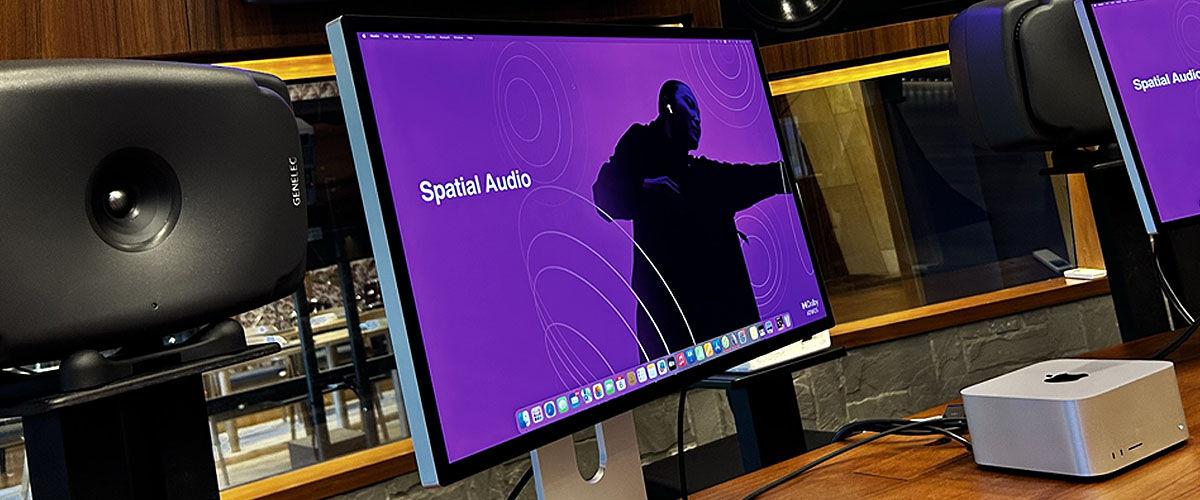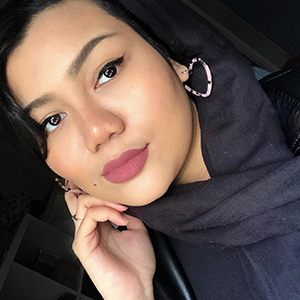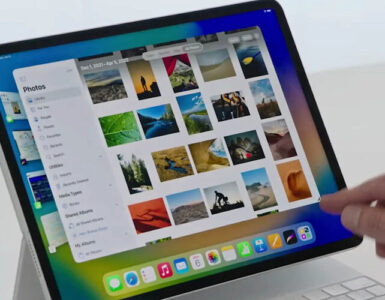Back in 2020, Apple announced new technology that pricked the ears of music fans and listeners – the ability to listen to music in stereoscopic 3D with Apple’s Spatial Audio. At the time, Spatial Audio sounded like a potential game-changer and after three years, the tech continues to change and evolve the way fans listen to music as the company expands to make Spatial Audio accessible to users across various products.
Spatial Audio is designed to deliver 3D audio in surround sound through headphones. It takes 5.1, 7.1 and Dolby Atmos signals and adjusts the frequencies that each ear hears so sounds will appear to come from in front, from the sides, behind and even from on top. Paired with Apple’s dynamic head tracking, Spatial Audio re-creates theatre-like sound that will surround the user and shift according to the movement of the user’s head. For example, if a user turns their head to the left, the music that previously felt like it was coming straight to the user, will now sound stronger in the right ear.
The feature first arrived as part of iOS 14 in 2020 and was primarily focused on the movie and TV show viewing experience. It was later brought to Apple Music with Dolby Atmos in June the year after. Soon after, Spatial Audio was extended to tvOS and the new Apple TV 4K, and can be used with Macs powered by the latest M1 chip. In 2023, Spatial Audio was also brought to Apple’s smart speaker range, the HomePods.
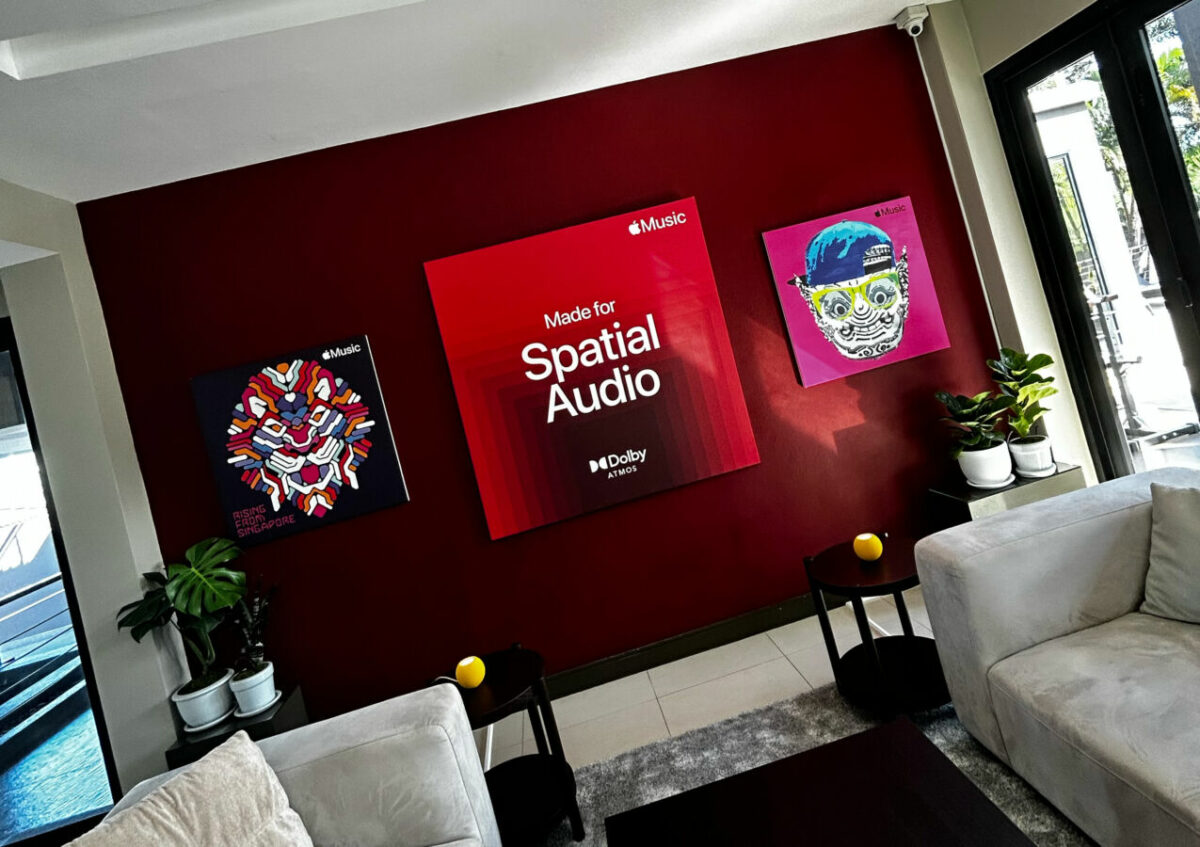
Spatial Audio is not limited to the listening experience. Together with Apple’s music creation software Logic Pro, making music in Spatial Audio with Dolby Atmos is now accessible to folks who own products that support the app like the iPad Pro and MacBook for example.
With Logic Pro, musicians and producers – regardless of their experience in the industry – can create fully immersive spatial audio mixes and expand their songs into a 3D experience. The surround-enabled plug-ins in Logic Pro are optimised to work in Dolby Atmos and provide all the tools musicians and producers need to create a professional-sounding spatial mix whether they’re making it in a professional studio space, or the comforts of one’s bedroom. Finneas O’Connell – Billie Eilish’s co-writer, producer, older brother and an artist of his own right – produced Eilish’s hit album When We Fall Asleep, Where Do We Go? in his bedroom with Logic Pro X. And when it comes to music, one doesn’t have to look too far away for inspiration.
Singaporean producers Evan Low and Ezekiel Keran both use Apple’s Mac, AirPods and Logic Pro in their music production process. A stone’s throw away is Thai musician Earth Patravee who is making Spatial Audio her new normal when arranging and writing her songs.
Singaporeans will be familiar with Low’s works – regardless if they’ve heard of the producer personally or not. Low has engineered for the likes of David Foster and has produced, as well as performed alongside artists like Nathan Hartono, Linying and The Sam Willows. Low also famously co-arranged and co-produced The Road Ahead, the theme song for Singapore’s National Day Parade in 2021.
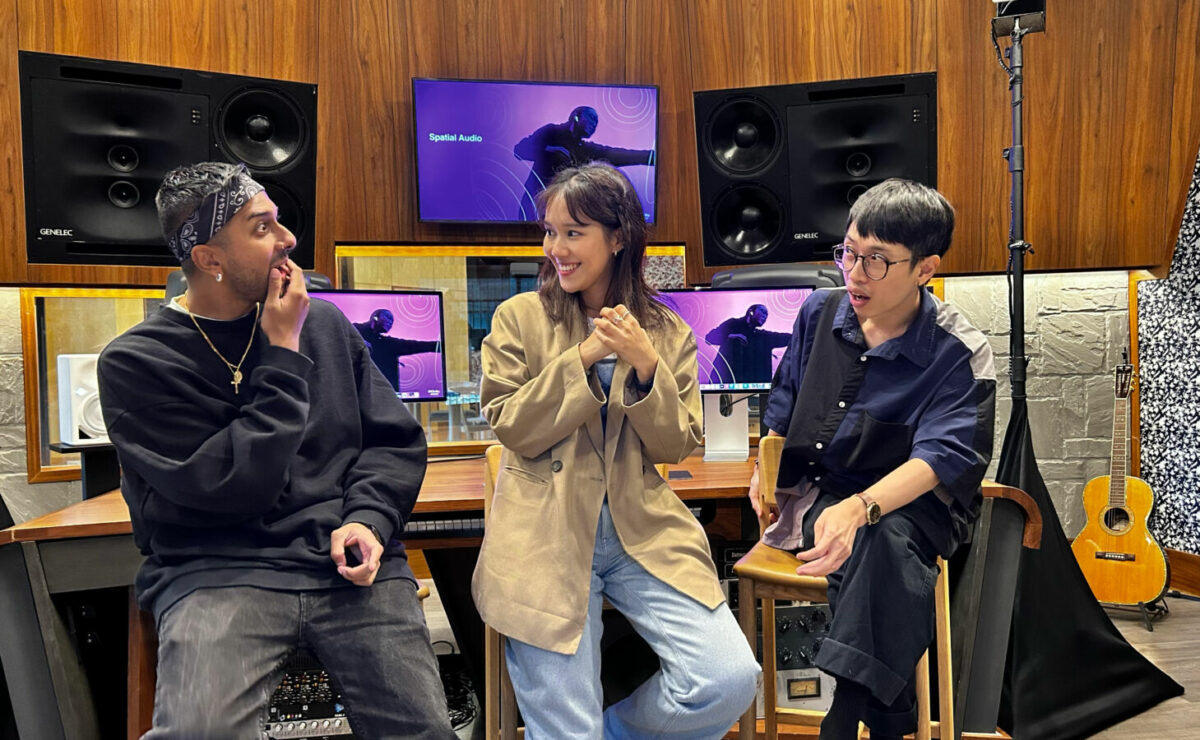
For Low, Spatial Audio is a natural evolution. From mono tracks to stereo mix, experiencing music in a 3D space is something he predicts music makers will adopt. Not only does he believe it allows musicians to express themselves better through this new technology, he believes that listening in 3D is the most natural form of listening as it mimics the human experience in everyday life.
“I think this is setting a new precedent. This is not just hype. Looking at the evolution of technology, from mono tracks to stereo, it’s [Spatial Audio] a new format, and I think it’s a new way of expressing yourself and I think adoption from it – it is of course hard from the get-go – but once it is easily accessible, this sets a very good standard where I think even the general public is able to adopt this format, just naturally without even knowing,” said Low.
“This is how we will naturally hear things. We humans perceive audio in a 360 space. We are able to create an experience that we weren’t able to adopt in the past and that to me opens up a lot of avenues. As a producer, we are able to now express ourselves in a very interesting new way where it is human. We want you to feel like you’re in the room with us and we’re creating songs and content that is like how we hear things right now, like me in front of you, instead of it being like oh, just left and right on.”
Thai musician Patravee sings a similar tune. Patravee is one of Thailand’s leading artists who has been in the industry for 8 years. She first shot to fame while singing covers on YouTube, and now has an EP, two albums and numerous singles to her name which she wrote and produced mostly by herself. Today, Patravee has become known in the industry as not only a singer but also a talented songwriter and producer for both established and up-and-coming T-Pop acts.
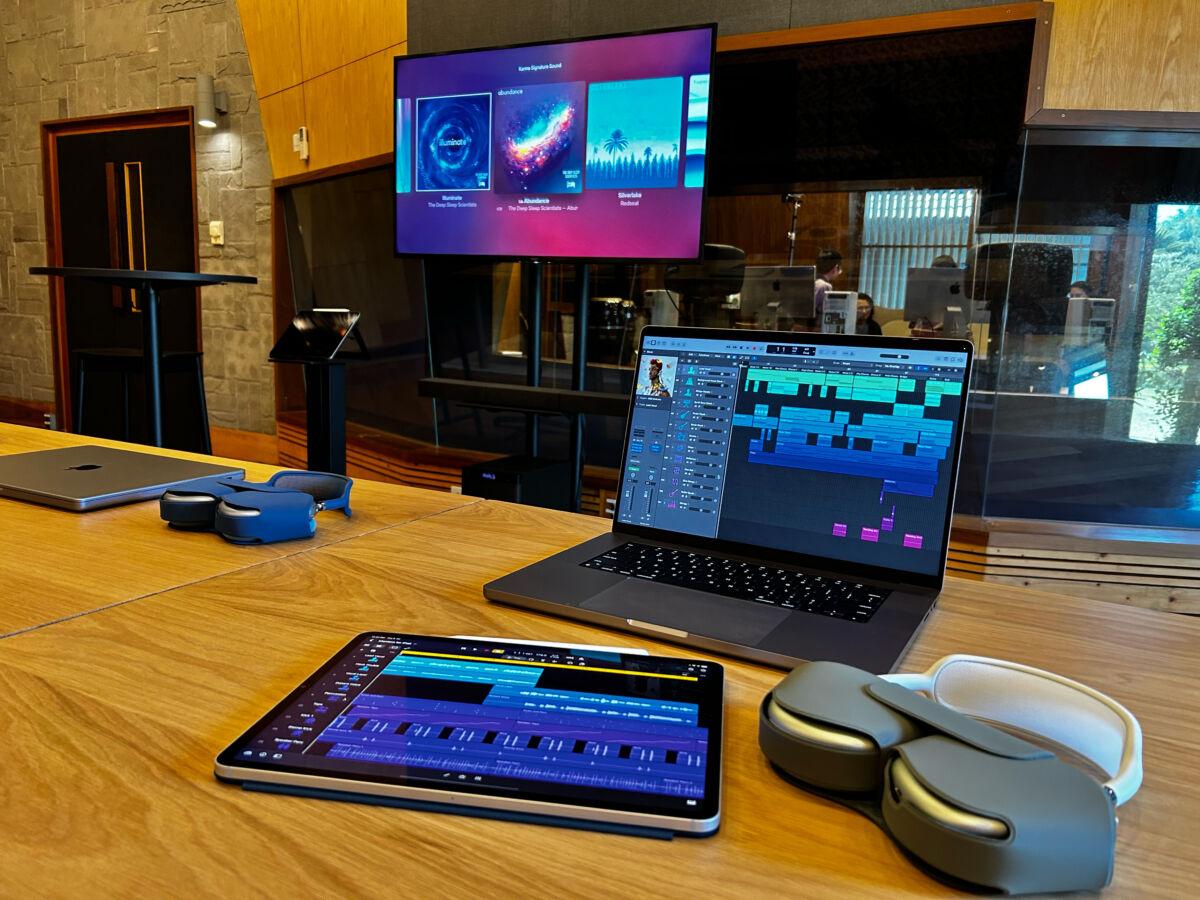
To Patravee, music making is an art form in which she can express her deepest feelings and hopefully, connect with her listeners on an emotional level. Introducing Spatial Audio in her music also allows her listeners to feel close and intimate with the 32-year-old singer.
“Making a song is almost like painting a picture. We have a picture in our mind, and we want to paint it like exactly how we feel and when I get a chance to make spatial audio, I know that a lot of things can be portrayed differently, like I know that I can put my voice back there and I can make the sound go around my head like this. When I layer my voice, I’m doing a lot more layers. Normally it’s two tracks, now I record 10 tracks just in case. I think it creates more room for creativity for me. It comes naturally now. I don’t force myself to think like that, but when the door is open, I feel like it’s in the back of my head,” said Patravee.
“I’m a very emotional girl. I was driving and crying and I was writing songs and I embrace myself and I want that environment in my songs. I want my voice to move around like hugging you, embracing you. I feel like the audio has some meaning, like I can put that in the meaning in my song.”
Ever since discovering Spatial Audio and learning how to make her own songs, Patravee is extra intentional with her music-making process. Especially since she had no background in music and had to learn everything on her own. This accessibility to make spatial audio music via Logic Pro doesn’t only benefit independent artists like Patravee. Established music makers also have the ability to expand their skills and portfolio with the software.
Take Keran for example. Keran is a hip-hop R&B producer who found regional acclaim in the Taiwanese hip-hop and pop scene. He’s produced and developed Singapore’s hip-hop musicians like Yung Raja and Fariz Jabba. His first time experimenting with Spatial Audio was pure happenstance. At the time, the producer was debuting local model turned singer-songwriter Iman Fandi’s debut single Timeframe.
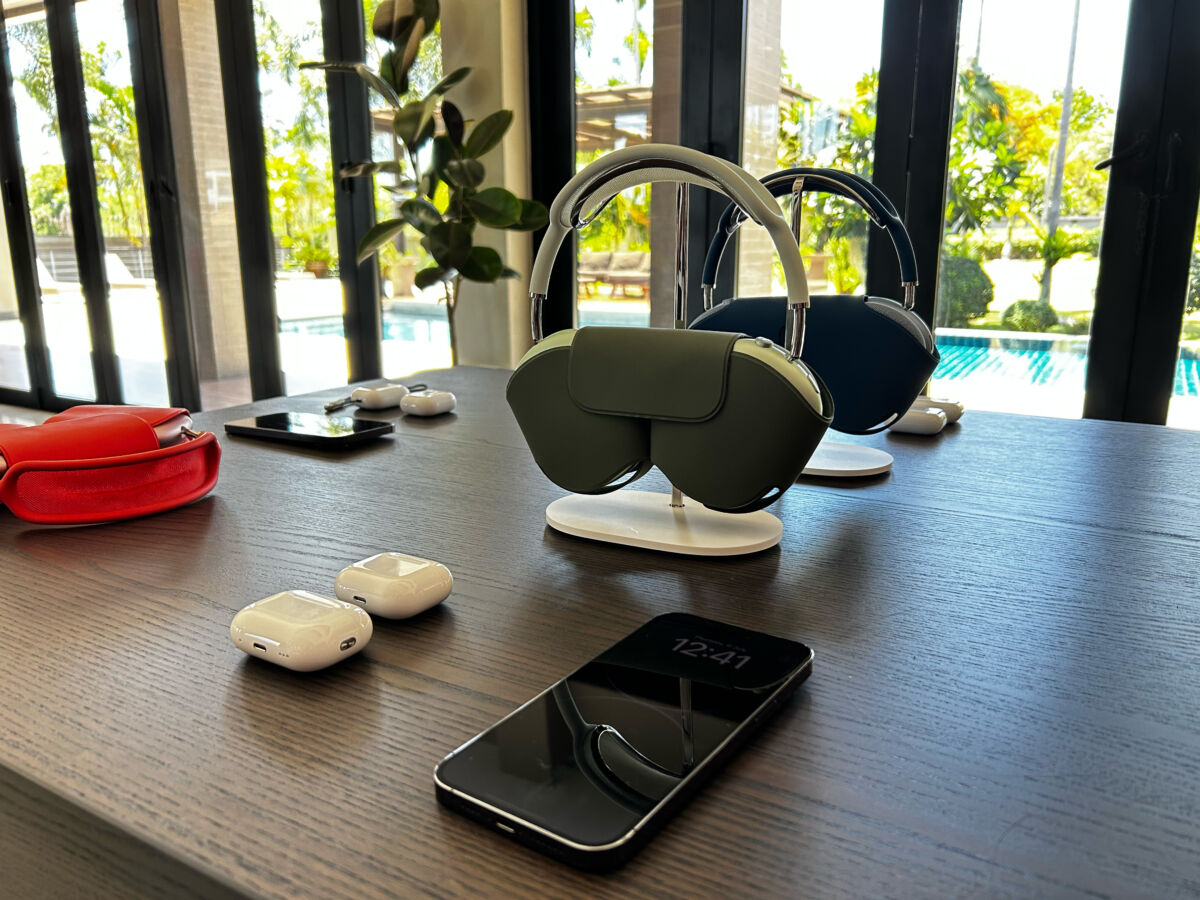
“I chanced upon it actually, this was sometime in 2020 to 2021 November or December period. I was at Universal [Music Group] and I was handling the Iman Fandi project. We were just about to launch her into market and we wanted to do something different with her release. And then just completely by chance [Apple] announced Spatial Audio. When I listened to the mix I was like ‘Wow, this has a huge difference from a regular stereo mix that we are all used to!’” Shared Keran.
“It was a gradual process. It was so difficult to integrate the process and then Logic Pro launched! Seamless integration right! Like you can do it in session itself and now it’s accessible to everyone because at one point, it felt like you had to be specialized to know how to mix spatial audio but now everyone can do it. I think that really opened my eyes, opened the floodgates for what’s possible.”
As of now, Spatial Audio with dynamic head tracking is available on the AirPods Pro (1st or 2nd gen), AirPods Max, AirPods (3rd gen), Beats Fit Pro, Apple TV 4K with tvOS 15 or later, built-in speakers on a Mac computer with Apple silicon, iOS or iPadOS15.1 or later, the built-in speakers on an iPhone 7 or later, iPad Pro 12.9-inch (3rd gen and later), iPad Pro 11-inch, iPad Air (3rd gen and later), iPad (6th gen and later) and iPad mini (5th gen and later).
Spatial Audio can be experienced via Apple Music, Apple’s audio streaming service with access to over 100 million songs and 30,000 playlists ad-free. Apple Music is also able to save music to your device for offline listening and provide expert-curated playlists such as Made for Spatial Audio, Hits in Spatial Audio and Driving in Spatial Audio. Apple Music also flaunts smooth integration with Siri assistant on iOS devices and features Apple Music Sing too.
Apple Music is only S$10.98 per month, first month free. Logic Pro is available on the Apple App Store for S$299.98.

